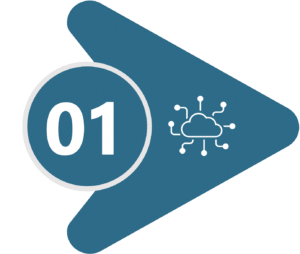OVERVIEW
Employed provider networks are under increasing scrutiny during these difficult economic times. Ever-increasing subsidies due to continually increasing expenses that outstrip marginally changing revenues create a spotlight on financial performance.
CHALLENGES
Employed provider networks have limited options to optimize their financial performance. In order to identify specific areas of opportunity, HSG recommends reviewing financial performance through the following lenses, and evaluating the component parts of these groupings:
- How can volumes be increased with existing provider and staff resources?
- How can expenses on current volumes be minimized – or optimized?
- How can revenues on current volumes be increased?
Components involved with the lens of increasing revenues on current volumes include:
- Coding and Documentation proficiency
- Revenue Cycle effectiveness
- Fee Schedule appropriateness
- Payer contract rate fulfillment
- Payer mix/market demographics
APPROACH
HSG’s Insights to Action Methodology takes clients through six key steps to identify problems and create long-lasting solutions.

DATA ACQUISITION AND TRANSFORMATION

What data do we aggregate to solve the problem, and how do we extract information from the data?
To analyze performance and determine opportunities in this area, HSG looks at:
- An up-to-date Provider Roster with credential, clinical FTE, and specialty designation
- CPT Report by provider for the past 12 months with CPT codes, modifiers, charges and payments
- The CPT Report (and Provider Roster) is used to develop provider coding curves, which can be compared against national CMS coding curves to determine how well providers’ performance compares to available benchmarks.
- Note: This level of assessment does not delve into medical record reviews to determine individual coding and documentation proficiencies that a formal Coding and Documentation Audit would entail.
- Collections Report by rendering provider
- Payer Mix data
- While the Payer Mix may not be able to be altered, it provides important parameters regarding potential business opportunities and financial performance interpretations.
- A/R Aging Report; Denials Management Report
- The A/R Aging Report can be directly compared to MGMA (and other) national benchmarks.
- Current Fee Schedule
- The Fee Schedule can be compared to national Medicare Allowable Charges to ensure full capture of all payers’ allowable charges.
- Payer Contract details and rates
- Payer Contract rates can be compared to the Collections Report entries to assure accurate reimbursements. The rates can also be compared to other organizations in the region via proprietary resources to determine “fairness.”

PROFESSIONAL SERVICES
What expertise do we apply to find a solution?
HSG utilizes seasoned, in-house expertise to analyze the data, characterize and evaluate the current state, and identify potential opportunities for improvement.
Beyond direct data analysis, additional interactions include focused interviews and onsite observations to ensure the data is placed and interpreted in context and to more deeply explore pertinent areas in greater detail.
*Note: This level of assessment does not delve into medical record reviews to determine individual coding and documentation proficiencies that a formal Coding and Documentation Audit would entail.

PACKAGING
How do we structure and apply our expertise?
Upon completion of the assessment, a comprehensive report is created consisting of an Executive Summary, which outlines the overall observations and recommendations and links to the underlying data which follows. An Appendix presents individual and/or special-specific CMS coding curve comparisons for reference and potential deeper exploration.

DELIVERY
When and how do you receive solutions?
The comprehensive PowerPoint-based report is reviewed in detail with the designated engagement executive team in a preliminary manner, prior to any onsite visits and again after the report is “finalized” based on the onsite observations.
Executive team input is incorporated during each of these interactions and the truly final report is forwarded for organizational reference and utilization. The report could also be accessed through HSG Dashboard.

IMPLEMENTATION & MONITORING
How do we provide ongoing support to your organization?
HSG assists with creating action plans, investigating specific areas in greater detail, and/or implementing identified interventions to improve organizational performance.
Specific HSG assistance can include developing an ongoing Coding and Documentation Audit and Education Program for the organization. Assistance can also entail onsite management team augmentation to provide dedicated resources to tackle desired undertakings. Onsite assistance is often a great benefit when working through revenue cycle management process improvement.
Action plans for areas targeted for intervention would include measures of success and mechanisms to monitor improvement in true PDSA fashion.
NEXT STEPS
Once an action plan is in place, the organizational assessment can be repeated every several years to maintain a clear, updated understanding of the current state of these areas.
The greatest organizational impact is achieved through a comprehensive assessment of the entire employed provider network – not only looking at “how can revenues on current volumes be increased?”, but also at “how can volumes be increased with existing provider and staff resources and how can expenses on current volumes be minimized or optimized?”
Regardless, as individual areas are assessed or as action plans are developed, organizational structures, dedicated support, and other functional elements often also merit continuous review.
HSG partners with health systems to develop, implement and optimize market-and-provider-centric growth strategies through industry-leading market intelligence analytics and strategic advisory expertise. When you’re ready to evaluate your network, reach out to HSG expert Dr. Terry McWilliams or Kari Craig to get started.
